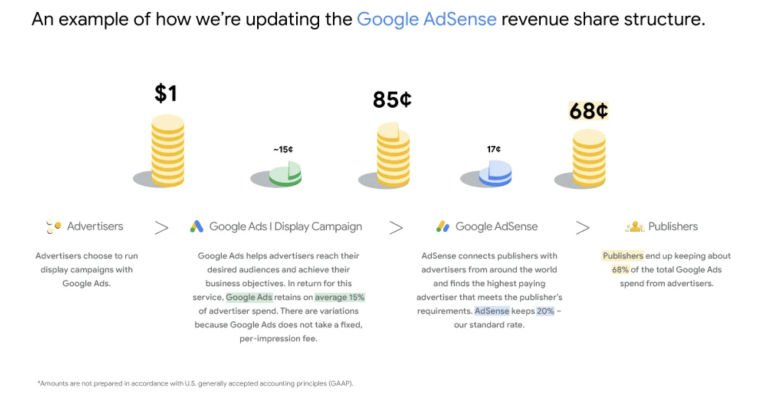
Google AdSense's Transition to eCPM Payment Model: What Publishers Need to Know

Exploring the recent shift in Google AdSense's payment model to eCPM and its implications for publishers.
Understanding the Transition to eCPM Payments
In a recent development, Google's AdSense program has undergone a significant transformation, moving towards an innovative eCPM payment model. This shift marks a pivotal change in how publishers monetize their online content.
Google AdSense Shifts To eCPM Payment Model
The transition, confirmed by Ginny Marvin, the Google Ads Liaison, signifies a departure from the traditional revenue share structure. Under the new eCPM model, publishers are set to experience a revamped approach to earning from their website traffic.
Previously, the revenue share model for AdSense stood at a fixed 68% for publishers. However, with the introduction of eCPM, the revenue split now delineates separate rates for the buy-side (advertisers) and sell-side (publishers), ushering in a more nuanced payment framework.
A post on Tweeter (X)
Delving into the Updated Revenue Share Structure
Google has provided detailed insights into the revised revenue share structure accompanying the shift to eCPM payments. Publishers engaging in AdSense for content will now receive 80% of the revenue post the deduction of advertiser platform fees.
The intricacies of this new model come to light with the varying scenarios of ad purchases. When Google Ads procure display ads on AdSense, they retain an average of 15% of advertiser spend, ensuring that publishers still maintain a significant chunk of revenue.
However, the dynamics alter when third-party platforms engage in buying AdSense display ads, leading to publishers receiving an 80% share post the third-party fees. This differentiation in revenue distribution underscores the evolving landscape of online advertising partnerships.
Navigating the Per-Impression Payment Model
As Google embarks on transitioning AdSense to a per-impression payment model, aligning it with industry standards, publishers are poised to benefit from enhanced comparability in earnings across various advertising platforms.
This payment model update is not expected to disrupt the ad display capabilities for publishers, as long as they adhere to existing AdSense policies and Better Ads Standards. Maintaining a seamless user experience remains paramount amidst these structural changes in monetization strategies.
Adapting to the per-impression model necessitates publishers to fine-tune their content and SEO strategies to optimize revenue generation. Strategies focusing on increasing traffic volume, enhancing user engagement metrics, and ensuring compliance with ad standards are pivotal in maximizing earnings under the new paradigm.







